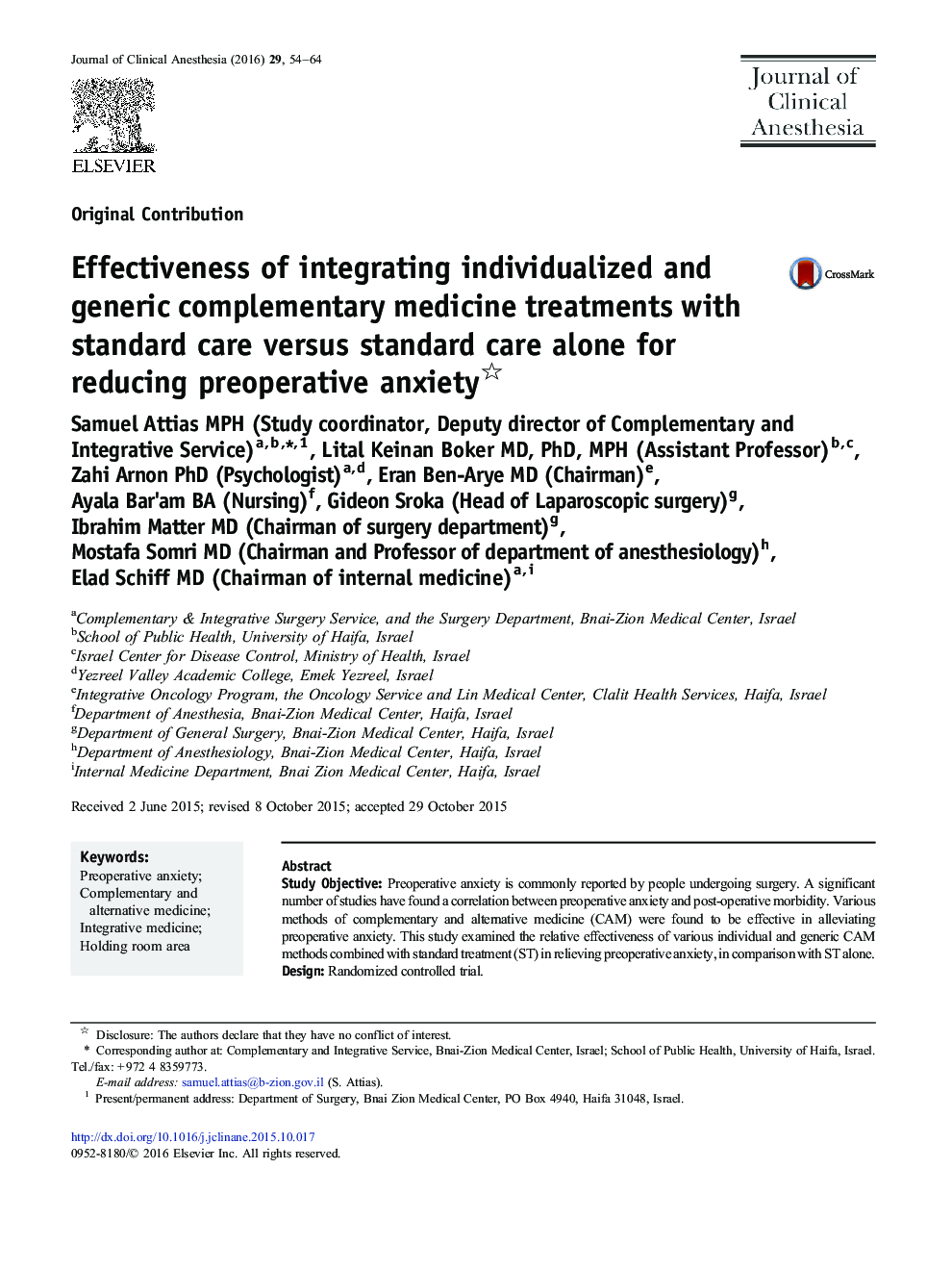| Article ID | Journal | Published Year | Pages | File Type |
|---|---|---|---|---|
| 5884957 | Journal of Clinical Anesthesia | 2016 | 11 Pages |
â¢Study focused on preoperative anxiety reduction using CM additional to anxiolytics.â¢Individualized CM interventions were superior to generic CDRGI, and ST.â¢No significant differences were found between the individual CM treatments.â¢Differences between CDRGI and individual GI were statistically but not clinically significant.
Study ObjectivePreoperative anxiety is commonly reported by people undergoing surgery. A significant number of studies have found a correlation between preoperative anxiety and post-operative morbidity. Various methods of complementary and alternative medicine (CAM) were found to be effective in alleviating preoperative anxiety. This study examined the relative effectiveness of various individual and generic CAM methods combined with standard treatment (ST) in relieving preoperative anxiety, in comparison with ST alone.DesignRandomized controlled trial.SettingHolding room areaPatientsThree hundred sixty patients.InterventionsPatients were randomly divided into 6 equal-sized groups. Group 1 received the standard treatment (ST) for anxiety alleviation with anxiolytics. The five other groups received the following, together with ST (anxiolytics): Compact Disk Recording of Guided Imagery (CDRGI); acupuncture; individual guided imagery; reflexology; and individual guided imagery combined with reflexology, based on medical staff availability.MeasurementsAssessment of anxiety was taken upon entering the holding room area (surgery preparation room) ('pre-treatment assessment'), and following the treatment, shortly before transfer to the operating room ('post-treatment assessment'), based on the Visual Analogue Scale (VAS) questionnaire. Data processing included comparison of VAS averages in the 'pre' and 'post' stages among the various groups.Main ResultsPreoperatively, CAM treatments were associated with significant reduction of anxiety level (5.54-2.32, p < 0.0001). In contrast, no significant change was noted in the standard treatment group (4.92-5.44, p = 0.15). Individualized CAM treatments did not differ significantly in outcomes. However, CDRGI was less effective than individualized CAM (P < 0.001), but better than ST (p = 0.005).ConclusionsIndividual CAM treatments integrated within ST reduce preoperative anxiety significantly, compared to standard treatment alone, and are more effective than generic CDRGI. In light of the scope of preoperative anxiety and its implications for public health, integration of CAM therapies with ST should be considered for reducing preoperative anxiety.
